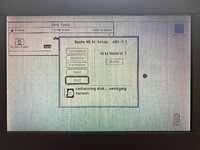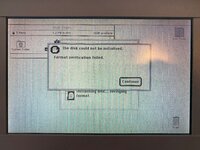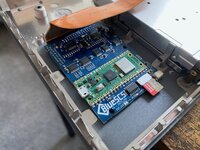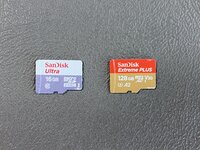Recently I finally went ahead and got a BlueSCSI for my PB 165c, which is currently still running its original 120MB HDD with System 7.1 installed.
I decided to try reinstalling that version since (a) that was what shipped on this machine originally, (b) it's what is installed on the HDD already so I know it works, and (c) every online resource states that the 165c is compatible with it.
However ... after installing the BlueSCSI and inserting a known-good System 7.1 Install 1 floppy, an error appears that states 7.1 "will not work" on this machine. So, it seems I cannot install System 7.1 despite the fact that this machine was already literally running ... *checks notes* System 7.1.
Is there some kind of voodoo-magic required to get this to work, or am I just missing something here? I'm familiar with seeing this error when trying to install OS versions that are obviously totally incompatible with a particular machine, but have been quite baffled to see it in this case.
Screenshot running off the original HDD:

Error message:

From EveryMac:

I decided to try reinstalling that version since (a) that was what shipped on this machine originally, (b) it's what is installed on the HDD already so I know it works, and (c) every online resource states that the 165c is compatible with it.
However ... after installing the BlueSCSI and inserting a known-good System 7.1 Install 1 floppy, an error appears that states 7.1 "will not work" on this machine. So, it seems I cannot install System 7.1 despite the fact that this machine was already literally running ... *checks notes* System 7.1.
Is there some kind of voodoo-magic required to get this to work, or am I just missing something here? I'm familiar with seeing this error when trying to install OS versions that are obviously totally incompatible with a particular machine, but have been quite baffled to see it in this case.
Screenshot running off the original HDD:
Error message:
From EveryMac:




